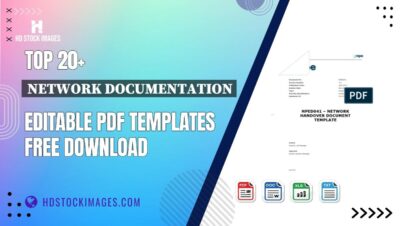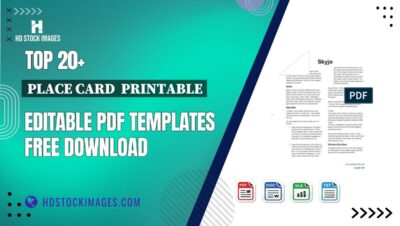Deciding to close your LinkedIn account can be a big step. Whether you're seeking a break from social media or have found a better platform for networking, it's essential to understand the process. In this post, we'll guide you through how to close your LinkedIn account and the key differences between deactivation and deletion, ensuring you're making an informed decision for your professional journey.
Understanding the Difference Between Deactivation and Deletion

Before you take the plunge into closing your LinkedIn account, it's crucial to grasp what deactivation and deletion mean. Both options may seem similar, but they serve different purposes and have distinct implications for your profile and connections.
1. Deactivation
- Temporary Solution: Deactivating your account is like putting it on hold. Your profile, connections, and activity remain intact, but they are invisible to others.
- No Data Loss: When you deactivate your account, LinkedIn saves all your information. You can reactivate it anytime by logging back in, and your profile will return to its previous state.
- Short-Term Break: This is ideal if you need a break but plan to return eventually. It allows you to step away without losing your connections or endorsements.
2. Deletion
- Permanently Removing Your Profile: Deleting your account is irreversible. Once you hit that delete button, all your information, connections, and endorsements are gone forever.
- Final Decision: This option is best if you've decided against returning to LinkedIn. Consider it a fresh start, but ensure you download any valuable information beforehand.
- Impact on Your Network: Deleting your account means your connections will no longer see your profile, and you will lose access to your network and any groups you’ve joined.
In summary, deactivation is perfect for a break, while deletion is suitable for a clean break from LinkedIn. Choose wisely based on how you envision your professional networking in the future!
Also Read This: How to Earn LinkedIn Verification and Boost Your Professional Credibility
3. Step-by-Step Guide to Deactivate Your LinkedIn Account

If you're considering taking a break from LinkedIn rather than permanently deleting your profile, deactivating your account is a simple and reversible process. Here’s how to do it in just a few steps:
- Log into Your LinkedIn Account: Start by going to the LinkedIn website and signing in with your email and password. Make sure you're on the homepage.
- Access Your Settings: Click on your profile picture in the top right corner of the page. From the dropdown menu, select "Settings & Privacy."
- Navigate to Account Preferences: In the settings menu, look for "Account preferences" on the left sidebar. Click on it to access account-related options.
- Find the Deactivate Option: Scroll down until you see the section labeled "Account management." Here, you’ll find an option that says "Deactivate your account." Click on it.
- Choose a Reason: LinkedIn will ask you to select a reason for deactivating your account. It could be anything from "Too many emails" to "Temporary break." Choose the one that suits you best and click "Next."
- Confirm Your Decision: Finally, LinkedIn will ask you to enter your password to confirm that you want to deactivate your account. After you input your password, click on "Close account."
And voilà! Your LinkedIn account is now deactivated. You won't receive any emails or notifications during this period, and your profile will be invisible to others. If you ever decide to return, simply log in again, and your account will be restored along with all your connections and data!
Also Read This: How to Add Employees to Your LinkedIn Company Page
4. How to Permanently Delete Your LinkedIn Profile
Ready to say goodbye to LinkedIn for good? If you've made up your mind to permanently delete your profile, follow this straightforward guide:
- Sign In to Your Account: Just like with deactivation, start by logging into your LinkedIn account.
- Go to Settings: Click on your profile picture at the top right corner and select "Settings & Privacy." This takes you to the same settings area you accessed before.
- Select Account Preferences: On the left sidebar, click on "Account preferences" to find options related to your account.
- Locate the Closing Account Option: Look for the section on "Account management." Here, you’ll find the option to "Close your account." Click it.
- Choose a Reason and Confirm: LinkedIn will ask you to provide a reason for your decision. After selecting one, click "Next." You will then need to enter your password again to confirm your choice.
- Final Confirmation: LinkedIn will warn you that closing your account is permanent and irreversible. If you're absolutely sure, click “Close account” to finalize the process.
Once completed, your profile will be permanently deleted, and all your data—including connections, endorsements, and messages—will be lost. If you change your mind, keep in mind that you won’t be able to recover your account or any information associated with it.
Deleting your LinkedIn account can feel like a big step, but if it’s what you need for your personal or professional wellbeing, go for it! Remember, you can always create a new profile in the future if you decide to return.
Also Read This: How Do You Search for People on LinkedIn? Efficiently Finding Individuals on LinkedIn
5. What Happens After You Close Your LinkedIn Account
So, you've decided to close your LinkedIn account. It's a big step, but it's important to know what to expect next. When you hit that delete button, here’s what happens:
- Immediate Account Closure: Your profile will be immediately removed from the platform. This means that no one will be able to see your profile, nor will they be able to send you messages.
- Data Retention: LinkedIn retains some data for legal and operational purposes. Even after you close your account, certain information might be saved for a limited time. However, your profile and connections are no longer accessible.
- Loss of Connections: Remember all those connections you built? They will go away with your account. You won’t be able to reconnect unless you start a new account and reach out to them again.
- End of Recommendations: Any recommendations or endorsements you've received will be lost. If you've built a strong professional brand on LinkedIn, that trust factor might take time to rebuild elsewhere.
- No More Notifications: You'll stop receiving notifications about job opportunities, messages, or updates from your connections. If you're planning to rejoin in the future, keep in mind you won’t receive updates on your previous activity.
It's a good idea to back up any important data or connections before you take this step. Consider exporting your contacts and saving any valuable messages or posts. This way, even after closing your account, you’ll have a bit of your LinkedIn life saved.
6. Frequently Asked Questions About LinkedIn Account Closure
As you ponder over closing your LinkedIn account, you probably have quite a few questions. Here’s a handy FAQ to clarify things:
- Can I reopen my LinkedIn account after closing it?
- Yes, you can reactivate your account within 20 days of closure. After that, your data will be permanently deleted, and you won't be able to recover it.
- Will my connections be notified when I close my account?
- No, LinkedIn does not notify your connections when you close your account. However, they won’t be able to see your profile anymore, so it might raise some questions later!
- What if I just want to deactivate my account temporarily?
- LinkedIn allows you to temporarily deactivate your account instead of fully closing it. This way, you can take a break without losing your connections and data.
- Can recruiters still see my profile after I close my account?
- Nope! Once you close your account, recruiters and others will no longer have access to your profile or associated content.
- Are there any alternatives to closing my account?
- If you’re looking for a break, consider adjusting your privacy settings to limit visibility or notifications, or simply deactivate your account temporarily instead.
Closing your LinkedIn account is a personal choice, and it’s essential to weigh your options carefully. Understanding the consequences can help you make a well-informed decision that aligns with your career goals and online presence!
 admin
admin








